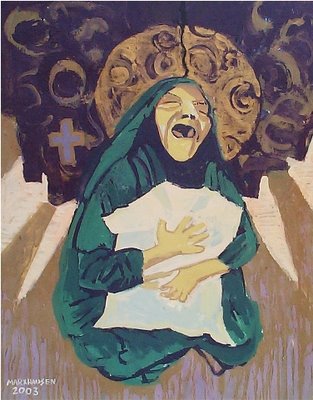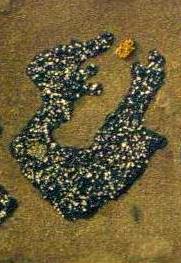The letter H had a "hhhhh" sound. As in, hahhhh - lay - loo - yah. It made Griffith think of the wind sound coming out of his mouth. Like the breath of God. How God called things into existence by the sound of His breath, by the sound of His voice. Speaking into being. A state of releasing -- out of which substance and life and worship and praise came to be.
One minute close-up details of H painting. Video 2008.
I am happy to see this work continue to speak to those who view it. One lady after the library talk had told me it was foreign to her, at first. When she heard what lines of thought were part of its process she embraced it. She had an illness that the medical profession had no answers to. http://karl.marxhausen.net/core.l.html Knowing that Genius wired neuro-science calmed her heart.
It was the particles on a wet sidewalk that set off this imagination. As I walked to work most mornings, I perceived atoms suspended in animation and vast galaxies held together by His intention, His idea, His expression.
While participants at the Art Talk questioned what the particulate material was - be it: fish tank gravel or worm casings or lentils or beans or spackle; I remember leaning over the work, carefully drizzling glue atop the crushed shell ridges and then dripping white house latex paint on the glue. Waiting - then seeing - the formation of incredible rivulet designs. These were my best moments.
Three minute video shot by Joe Tonnar Jr 2008. Participants were asked up to touch and give their best guess to what the materials were.
Adam Griffith and his acquisition.
The H now adorns his wall in De Witt, Missouri.


























